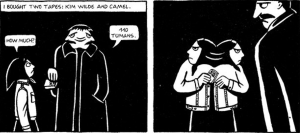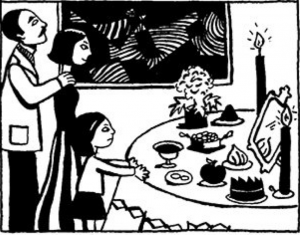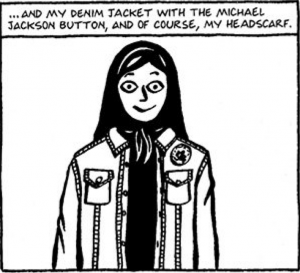This past week in our ASTU class, we finished reading the book Persepolis, by Marjane Satrapi. When I first learned we were going to be reading Persepolis, I really didn’t have any opinion on it whatsoever. While I never actually knew what the book was about, I recognized the cover from my mother’s bookshelf, and assumed it was just another dull and uninteresting foreign novel she had read. Not to my surprise, I was completely wrong. I found myself captivated by this intriguing story, not being able to put the book down once I started reading it.
Persepolis tells the story of a young girl named Marji, growing up during the Iranian revolution. The book illustrates the hardships and changes Marji and her family had to endure, along with many others living in Iran. At first glance, if you were to quickly flip through the pages of Persepolis, it could be easily seen as a simple comic book; however, this is not the case. Satrapi’s drawing style gives the reader a different perspective to the story a normal book would not be able to portray.
For example, Satrapi uses many visual techniques in her comics to show the concept of time throughout the book. On page 132 when Marji is buying illegal music tapes, Satrapi draws Marji and the street vendor appearing to have two faces in the panels, which seems to produce a feeling of motion over time.
Satrapi also uses changes in Marji’s appearances to give the reader a sense of time progression. As the story develops, Marji is given different hair lengths and clothing styles to show her physical changes as she grows up. In the beginning of the book, Marji has short hair and wears the typical clothing of a young girl.
However, towards the end of the book, Marji has long hair and forms her own sense of style, differentiating herself from the proper/traditional way most other Iranian girls dress.
The use of the illustrations to show the progression of time is one of the many visual techniques Satrapi utilizes in Persepolis. By doing so, she creates a complex piece of literature with messages that would not be depicted the same if it was simply just a comic book or a regular novel.


